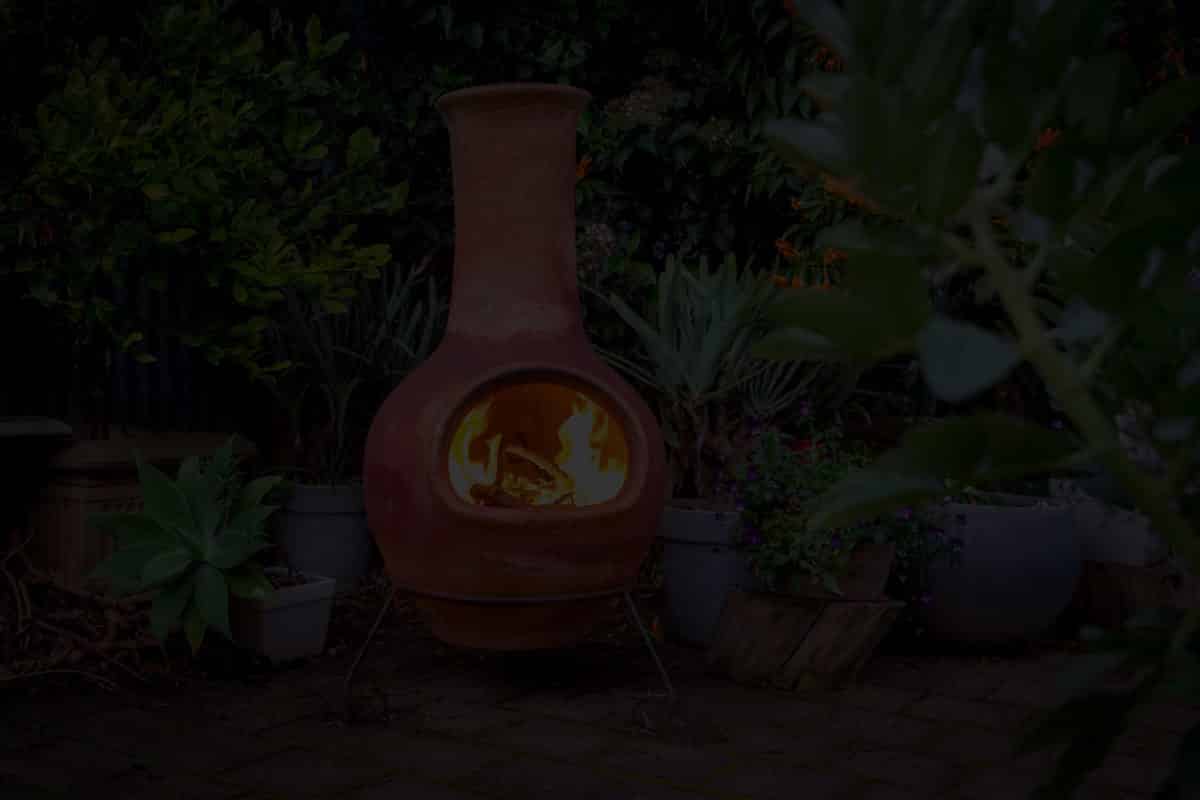Chiminea
My Chiminea is Smokey – What Can I do About it?
When you fire up your chiminea, it smokes like mad. How come your chiminea is smokey? While there’s almost always a tiny amount of smoke, chimineas aren’t particularly smoky. It’s a design thing. Hundreds of years of trial and error means the design is extremely efficient and effective, minimising smoke.
Using clean fuel like dry logs or charcoal cuts the chances of a smoking chim. The wind has an effect. And you can even buy special accessories to mitigate the issue. If a smoking chim is driving you nuts, here’s how to deal with it.
Preventing your chiminea from smoking – The wind
If your chiminea is exposed to the wind, sites somewhere the wind habitually blows, there’s more chance of it smoking. The wind can blow the smoke into your neighbours’ garden, even into the house, and smoke doesn’t do the clothing on your washing line much good. Luckily it’s really easy to solve.
First, find out which way is west. In the UK the prevailing winds always come from the west, so sit your chim so the hole is facing away from the wind. If possible, sit it away from the wind so it’s in a sheltered spot – that’ll help no end.
Dealing with chiminea fuel to minimise smoke
How about the different fuels a chim takes? If you’re burning wood in your chim, bear in mind that wet wood will give off smoke. It’s far better to use dry wood, stashing it where there’s no water, off the ground, safely away from rain and groundwater. Cleanliness is also important, since dirty wood will give off more smoke than clean wood.
As we recommend in our free Chiminea Buyers’ Guide:
“A piece of wood lying in the forest could be at least 50% moisture. The fire has to burn all that moisture off before it can start producing real heat. But a log that’s been dried for 2 years might have only a 15% moisture content.
Store your fresh wood away from the elements, off-ground with plenty of air circulation. Larger pieces need to be split so the air can dry them out quicker. When you store your wood this way, you can expect it to reach a moisture content of 30% within 1 year, and 20% within 2 years.”
Sometimes a little smoke is a great thing. Take hickory and pinion wood. The small amount of smoke they naturally generate when they burn smells fabulous, fending off mosquitoes and midges as well as giving a unique char-grilled flavour to chim-barbecued foods.
The type of wood you burn also has an effect. Some woods burn slowly, very hot and extremely clean. Others give off acrid smoke. The woods we recommend for a smoke-free experience are:
- Special chim logs and heat logs, made from recycled and compressed sawdust
- Apple wood, a low-smoke wood which burns at a moderate heat
- Ash wood, which burns with a high heat and low smoke
- Beech wood, which also burns hot with little risk of smoke
- Oak and pine are both low-smokers
In contrast, if you want to avoid smoke it makes sense to avoid burning cedar, chestnut, elder, douglas fir, horse chestnut, poplar, acacia, spruce and sweet chestnut wood, all of which tend to smoke like crazy. And never, ever burn laburnum wood, by the way. It’s actually poisonous.
Send smoke out of harm’s way with our chiminea extension pipe
Sometimes, especially when it’s windy, you can’t avoid a bit of chiminea smoke. Luckily we sell a handy Gardeco chiminea extension chimney, designed to send any smoke higher up into the air, away from washing lines and windows. All you do is fit it over the chimney part of the chiminea, no nails or glue required. When the wind dies down you can simply lift it off again and stash it for next time. Here’s a link to our extension chimney page.
Smoke-free outdoor fun all year long
Now you know how to deal with smoke. We hope you enjoy your chiminea through every season, in all weathers. If you have any questions, get in touch for a friendly chat. Otherwise, explore our site to find the perfect chim for your garden.

